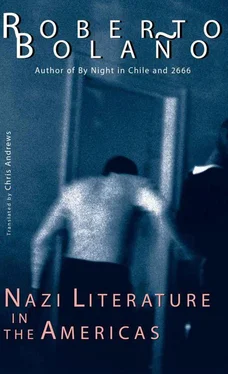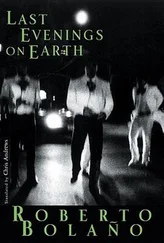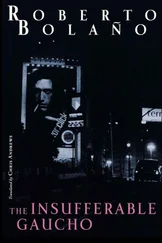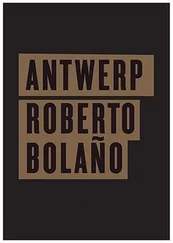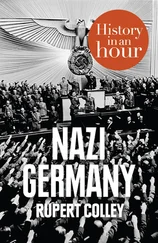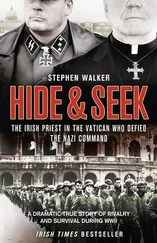That joke or poem, as I was to discover many years later, cost Ramírez Hoffman a week in the guardhouse. When he got out, he kidnapped the Venegas sisters. During the festivities at the end of 1973, he put on another display of skywriting. Over the El Condor air force base, he drew a star that seemed to be one more among the early stars of dusk, and then he wrote a poem that none of his superior officers could understand. One line was about the Venegas sisters. To an informed, attentive reader, it would have been clear that the girls were already dead.
In another line he mentioned a Patricia. Pupils of fire , he wrote. The generals watching him release smoke to form those letters assumed that he was writing the names of his sweethearts, his friends or whores from Talcahuano. Some of his friends, however, knew that Ramírez Hoffman was conjuring up the shades of dead women. Around the same time, he participated in two further air shows. He was said to have been the most intelligent cadet in his class, and the most headstrong. He could fly a Hawker Hunter or a combat helicopter without the slightest difficulty, but what he enjoyed most was to load the old plane with smoke canisters, climb into the Fatherland’s empty skies, and write out his nightmares, which were our nightmares too, for the wind to obliterate.
In 1974, having obtained the support of a general, he flew to the South Pole. It was a long and difficult voyage, but at each of his numerous refueling stops he wrote poems in the sky. According to his admirers, those poems heralded a new age of iron for the Chilean race. The Emilio Stevens who had been so reserved and unsure of himself in literary matters had disappeared without a trace. Ramírez Hoffman was confidence and audacity personified. The flight from Punta Arenas to the Arturo Prat Antarctic base was beset with dangers, which almost cost him his life. On his return, when the journalists asked him which had been the greatest danger, he replied: The stretches of silence. The waves of Cape Horn licking at the belly of the plane; huge but soundless waves, like in a silent film. Silence is like the sirens singing to Ulysses, he said, but if you resist it like a man, nothing bad can happen to you. In Antarctica everything went well. Ramírez Hoffman wrote ANTARCTICA IS CHILE, his exploit was recorded on film and in photographs, and then he returned to Concepción, on his own, in his little plane, which according to mad Norberto was a Messerschmidt from the Second World War.
He was at the height of his fame. He was called upon to undertake something grand in the capital, something spectacular to show that the new regime was interested in avant-garde art. Ramírez Hoffman was only too pleased to oblige. He stayed in the apartment of a friend from the air force academy, and spent his days training at the Captain Lindstrom airstrip, devoting his evenings to the solitary preparation of a photographic exhibition, to be held in the apartment and opened on the same day as his display of aerial poetry. Years later, the owner of the apartment declared that he had not seen the photographs Ramírez Hoffman was planning to exhibit until the night of the opening. As to the nature of the photos, he said that Ramírez Hoffman wanted to surprise the guests, and would only say that it was visual poetry — experimental, quintessential, art for art’s sake — and that everyone would find it amusing. Naturally the invitations were limited: pilots, young army officers (the oldest hadn’t reached the rank of commander) endowed with a certain aesthetic sensibility, a trio of journalists, a small group of civilian artists, a young society belle named Tatiana von Beck Iraola (apparently the only woman to attend the exhibition), and Ramírez Hoffman’s father, who lived in Santiago.
Things got off to a bad start. On the morning of the air show, bulging black cumulus clouds rolled down the valley, heading south. Some of Ramírez Hoffman’s superior officers advised him not to fly. He ignored the bad omens. He took off and the spectators watched with more apprehension than admiration as he executed a few preliminary stunts. Then he climbed and disappeared into the belly of an immense grey cloud that was moving slowly over the city. He emerged far from the airstrip, over an outlying suburb of Santiago. That was where he wrote the first line: Death is friendship . The he flew over some railway sheds and what appeared to be disused factories, and wrote the second line: Death is Chile . Then he headed for the city center. There, over the presidential palace of La Moneda, he wrote the third line: Death is responsibility . Some pedestrians saw him. A beetle-like silhouette against the dark and threatening sky. Very few could decipher his words: the wind effaced them almost straight away. On the way back to the airstrip he wrote the fourth and fifth lines: Death is love and Death is growth . When the strip came into sight he wrote: Death is communion . But none of the generals or their wives, or the senior officers, or the military, civil or cultural authorities present could read his words. A thunderstorm was brewing in the sky. From the control tower a colonel told him to hurry up and land. Ramírez Hoffman replied “Received” and immediately began to climb. Then came the lightning — the first bolt fell on the far side of Santiago — and Ramírez Hoffman wrote: Death is cleansing , but so unsteadily, given the adverse weather conditions, that very few of the spectators, who by now had started to get up from their seats and open their umbrellas, could understand what had been written. All that was left in the sky were dark shreds, a child’s scribble. The few who did manage to make it out thought Ramírez Hoffman had gone mad. It started to rain and the crowd hurriedly dispersed. The cocktail party had to be shifted to a hangar, and by that stage, what with the delay and the downpour, everyone was in need of refreshment. In less than twenty minutes all the canapés had been devoured. Some of the officers and ladies discussed the aviator-poet’s eccentric performance, but most of the conversations had moved on to questions of national and even international significance. Meanwhile Ramírez Hoffman was still up in the sky, struggling with the elements. On the airstrip glistening with rain (the scene was worthy of a Second World War film), only a handful of friends remained, and two journalists who wrote surrealist poems in their spare time, their eyes fixed on the prop plane veering around under the storm-clouds. Ramírez Hoffman wrote, or thought he wrote: Death is my heart . And then: Take my heart . And then: Our change, our advantage . And then he had no smoke left to write with, but still he wrote: Death is resurrection and the spectators were bewildered, but they knew that he was writing something. They understood the pilot’s will and knew that although they couldn’t make head or tail of it, they were witnessing an event of great significance for the art of the future.
Then Ramírez Hoffman landed without the slightest difficulty, was reprimanded by the officer from the control tower and certain other high-ranking officers who were still wandering among the remnants of the cocktail party, after which he went back to the apartment to prepare the second act of his Santiago gala.
The foregoing account of the air show may be reliable. Or not. Perhaps the generals of the Chilean Air Force were not accompanied by their wives. Perhaps the Captain Lindstrom airstrip was never set up for a display of aerial poetry. Perhaps Ramírez Hoffman wrote his poem in the sky over Santiago without asking permission or notifying anyone, although that seems unlikely. Perhaps it didn’t even rain that day in Santiago. Perhaps it all happened differently. The following account of the photo exhibition in the apartment is, however, accurate.
Читать дальше
